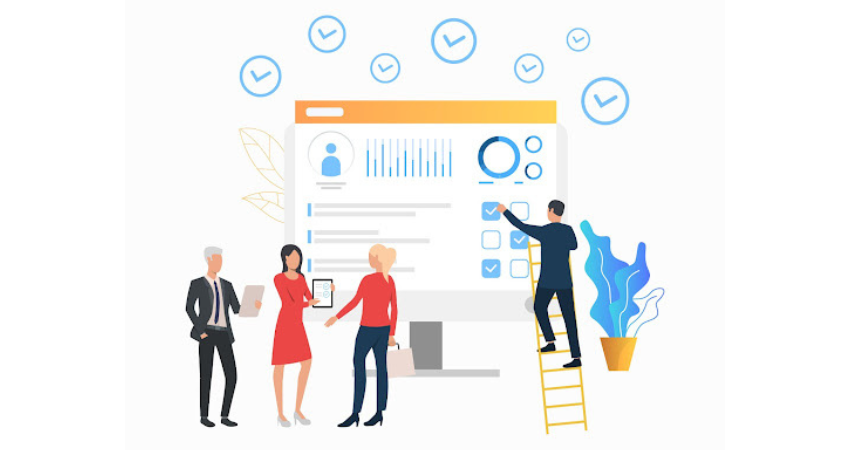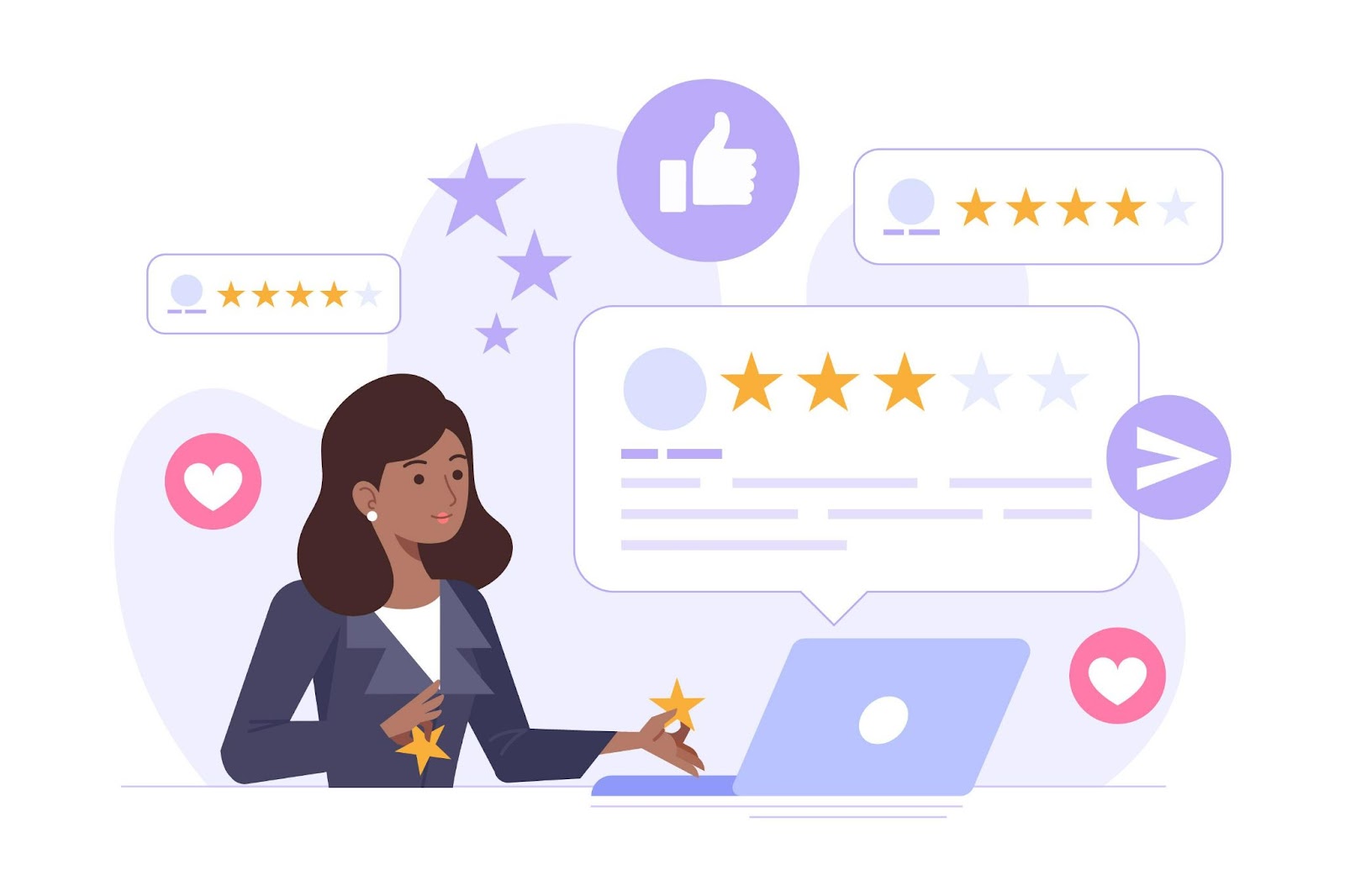
Recruiting is a complex process, which involves multiple stakeholders and requires an array of activities and tasks. This can be overwhelming for even seasoned recruiters. Some have been using spreadsheets to keep track of their candidates’ progress, but this approach is not scalable nor efficient enough. Nowadays, with the advent of technology, this is changing rapidly as companies/recruiters are adopting smart tools to make their lives easier.
Recruiting software helps you automate repetitive tasks, save time and reduce errors while helping you streamline your overall hiring process. Finding the right recruiting software will enable your organization to focus on what matters most – finding great talent and building an amazing team!
If you are looking for a solution that would help you manage all aspects of your recruitment process efficiently and easily then look no further than a recruiting software. Here are 10 features (plus a bonus!) that will help you choose the right one:
#1 It’s easy to automate
One of the most important features to look for in a recruiting software is whether it can be automated. The more you can automate, the better.
Recruiting is full of repetitive tasks that consume a lot of time and resources. If you do not have an efficient way to automate these tasks you will end up wasting more time than just doing them manually in the first place!
Automation saves money by ensuring that things are done consistently across all candidates or jobs (e.g., screening criteria). It also helps scale your business because it allows you to use existing infrastructure rather than building something new every time someone joins your team or leaves it. Automated processes also reduce errors, improve productivity and decrease the workload of recruiters.
When it comes down to it, automation simply means that there are fewer manual steps necessary for any given process within your hiring system which means fewer opportunities for human error or oversight.
#2 It has a great user experience
A software with a great user experience is one that allows the users to do what they want, when they want. The application should be easy to use, it should have a good design, and it should have an intuitive user interface. A good recruiting software will allow users to learn how to use it without having to consult with others or read extensive instructions every time they want something done.
#3 It’s easy to customize
When it comes to recruiting software, user experience is critical. An intuitive UI paired with a robust set of features give your users everything they need to get their job done from within one interface.
However, in order to ensure that this happens – and that you’re getting the most out of your software – you must first make sure it’s been customized for your organization.
Customizing a solution means tailoring its functionality to fit your unique needs and removing anything that isn’t useful or necessary for your organization’s workflow.
#4 Provides for teamwork and collaboration
Collaboration is a vital tool to have when it comes to recruiting. Collaboration allows you and recruiters, HR managers, and other stakeholders to work together, streamline the process, share feedback on each candidate in a single platform and stay on top of the hiring needs.
Collaboration is important because it helps you find the right candidates for each position you’re filling. You can’t find the best person if your team isn’t working together and sharing their notes, research findings or other information seamlessly. By collaborating with one another, everyone gets a better idea of what they need to do in order to fill a role with someone who’s going to be successful at their job.
Recommended Reading
How Recruitment Automation Software Could be the Gamechanger for Startups
#5 Interview scheduling, feedback and evaluation
The software you use should also have the ability to record feedback and evaluation. This is important because it allows you to track your interviewers’ performance, as well as the candidates they interview.
Some of the best recruiting software will allow you to schedule interviews with a simple click or tap, which is great if your company has a large number of applicants. It can also be used for recording feedback and evaluation from each interviewer so that if there are any issues with their performance, you can address them immediately.

#6 Has automatic screening, ranking and assessment tools
A good recruiting software will have screening and assessment tools.
- Screening is the process of sorting candidates that meet your criteria from those who don’t.
- Automatic ranking sorts through candidates and lists those who would be the right match for the open positions.
- Assessment tools are used to test the skills, knowledge, personalities, and abilities of potential hires.
An added benefit will be the facility to integrate with third-party assessment tools, so that it can meet your unique recruitment needs.
All of these tools are important for managing your candidate pool. You can create a list of requirements that each applicant needs to fulfill before they become a candidate for your job postings based on their resume or application form/chatbot responses. This helps you eliminate candidates who don’t fit the bill before they waste too much of their or your time, and ensure that only the best candidates move forward in their hiring process.
#7 Mobile-Friendly interface for hiring teams and candidates
Mobile devices have become an integral part of our daily lives, so it’s important that your recruiting software can be accessed by both hiring teams and candidates on the go.
This eliminates any frustration associated with searching for information about prospective employees or sending them messages in between meetings or at odd hours of the night/morning. Furthermore, you don’t want your candidates feeling like they’re being excluded from job opportunities just because they don’t have access via traditional means! In fact, almost 90% of smartphone users use it to seek jobs.
#8 Hiring process configurability
- Custom workflows: You can customize the hiring process to your company’s unique needs. For example, you can create custom workflows, work with multiple teams, and set up a customized interview calendar.
- Candidate pipeline management: You can also set up a candidate pipeline that shows all the candidates who have been in contact with you or applied for a position at your company over time as well as how many applications you’re receiving on a daily basis.
- Hiring plan management: Finally, you’ll want to keep track of all the hiring plans made by managers and recruiters so that they don’t overlap when reviewing applicants in person or over video conference calls during an interview process.
#9. Video interviewing
Video interviewing is a great way to show personality, creativity, and passion for the job. It allows you to see if a candidate fits in with your company culture through their body language and facial expressions. Seeing how a candidate reacts in different situations will allow you to get a better understanding of who they are as an individual by seeing how they respond when presented with common challenges or mundane tasks. This can help you determine whether or not this person would be able to thrive at your company based on their ability to handle pressure under various circumstances.
Recruiting chatbots can auto-schedule interviews with the candidate, the candidate can record a video interview on the interview portal at his/her own convenience, and AI will analyze the candidate. Later, the interviewer can go through the videos and make decisions. Video interviewing coupled with automated assessment tools will give you a clear view of a candidate’s eligibility for a job.
#10. Real-time analytics
A real-time analytics platform is essential to understanding the candidate’s journey, hiring manager’s journey, recruiter’s journey and candidate’s journey. It helps you understand every step of their engagement with your company.
The best way to do that is by building a reporting dashboard that provides a comprehensive overview of all your users and their activity on the platform. A well-designed dashboard will have metrics like:
- How many people signed up? Are they active or inactive?
- What percent of candidates complete the application process?
- What percent convert after applying?
- And much more!
Special Mention: #11 End-to-end tracking
End-to-end tracking is a feature that allows for the entire recruiting process to be tracked and monitored. This includes everything from sourcing, screening, and interviewing candidates to tracking the health of the candidate pipeline, time to hire, unresponsive candidates in order to initiate follow-ups, applicants’ status etc.
- Using a tool with this feature allows recruiters to manage multiple tasks at once without getting bogged down with paperwork or missing important deadlines.
- Candidates also benefit from end-to-end tracking because it allows them to see where they are in the recruitment process and what’s next on the agenda. If there is any wait time between steps, candidates can easily see when they should expect another update or follow-up call/email.
- From an employer’s perspective, end-to-end tracking offers several benefits including improving candidate experience; reducing no-shows; providing transparency into the hiring process; giving candidates more control over their choices while ensuring compliance with HR policies (i.e., avoiding discrimination).
Finding the right recruitment software is a must for any company that wishes to scale
It helps in recruiting, streamlining the interview process, and much more. The above-mentioned features can help you make an informed decision when it comes to choosing one among thousands of recruitment software available today.
When it comes to hiring, efficiency is key. You want to find the best people as quickly and easily as possible. A solid recruiting software can help you do just that with its easy-to-use interface, configurable features, and real-time analytics reports. Plus, it should integrate seamlessly with your existing HR systems so there’s no need for additional training or technical support – which should mean less time spent on paperwork and more time invested in getting better candidates through the door faster! Once you get started with the right software, you will find that your recruiting workflow is improving exponentially!




